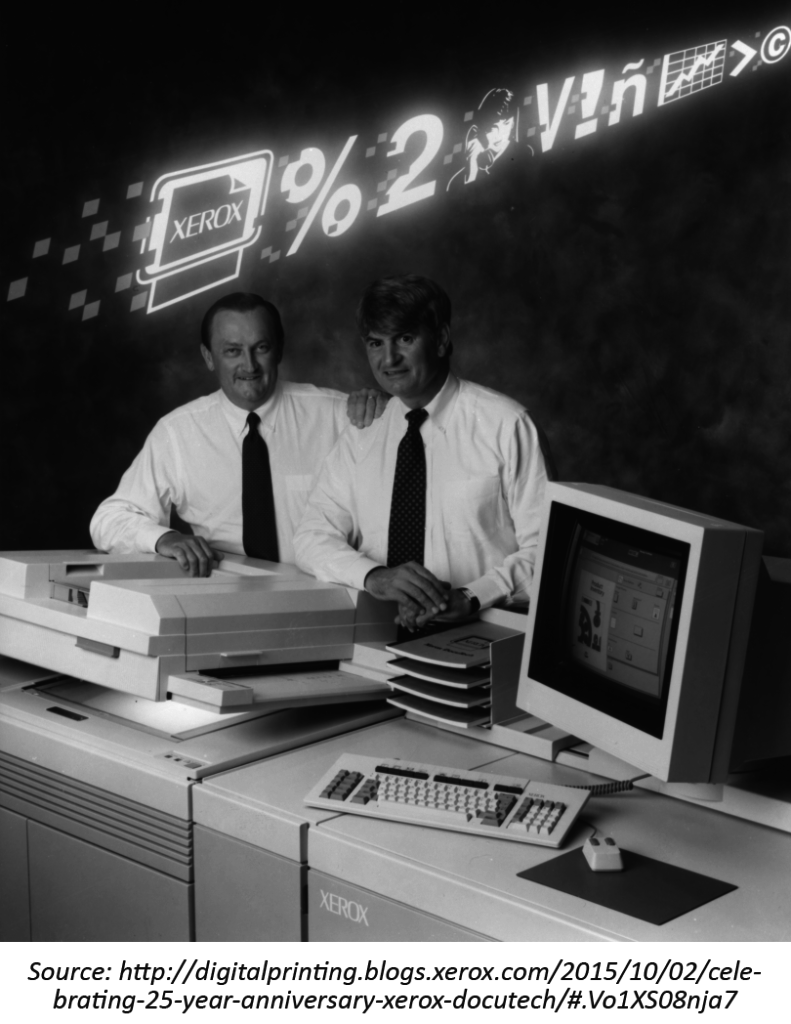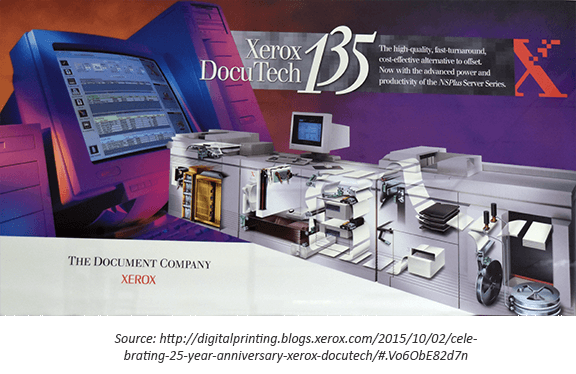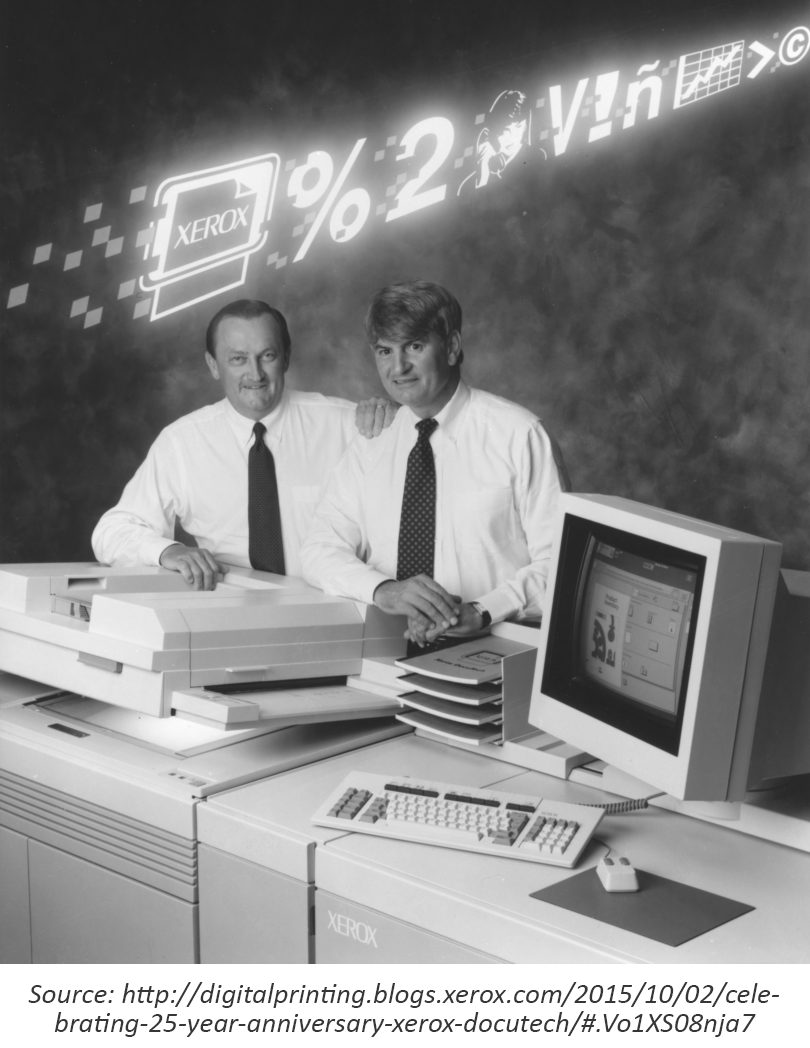Diary of a Digital Pioneer and a Look Back Over 25 years in Print History: Where it was, how far it has come and where it is going

Written by Beth Valdettaro, Director of Sales and Client Services
I remember where I was when someone first told me that large printing companies were testing a new technology – printing from a computer disk file instead of plates made from film. It was the early 1990s and the concept seemed far-fetched and filled with obstacles. I thought, “How can this be? Every electronic artwork file that I had seen or heard about was not printable!”
 I had read the 1995 Drupa technology reports that came out of the world’s largest print media fair. They detailed some of the newest color digital printing devices, however I did not really think about the future of the industry until a former employer of mine had gone to the Drupa International Trade Fair and made a deposit on a yet-to-be manufactured, Heidelberg QuickMaster DI press. No one really knew what the press was all about, however 3 big players including Xerox, Heidelberg and Indigo had entered the industry as a digital resource. I was presented with an offer to learn what “this digital business was all about,” train staff and customers, and supervise the installation and launch of the new digital printing department. I jumped at the chance to learn this new technology in the industry – not knowing if it was a fad, or here to stay. I’ve always been glad that I said “I’ll do it!” It was the single best career move of my life.
I had read the 1995 Drupa technology reports that came out of the world’s largest print media fair. They detailed some of the newest color digital printing devices, however I did not really think about the future of the industry until a former employer of mine had gone to the Drupa International Trade Fair and made a deposit on a yet-to-be manufactured, Heidelberg QuickMaster DI press. No one really knew what the press was all about, however 3 big players including Xerox, Heidelberg and Indigo had entered the industry as a digital resource. I was presented with an offer to learn what “this digital business was all about,” train staff and customers, and supervise the installation and launch of the new digital printing department. I jumped at the chance to learn this new technology in the industry – not knowing if it was a fad, or here to stay. I’ve always been glad that I said “I’ll do it!” It was the single best career move of my life.
I grin when I recall that first digital press was unit #43 off the Heidelberg manufacturing line in Germany and featured a “massive 1 Gigabyte of memory.” We thought that we would never use up all that press storage.
Twenty-five years ago, everything changed in the graphic arts industry. Xerox introduced the DocuTech 135 Production Publisher, a device that single-handedly ushered in the print-on-demand era. Over the next 10 years, most black-and-white print work shifted to the DocuTech, which could produce offset-quality copies 25 percent cheaper than offset presses, and in one-fifth the time. Printers quickly gravitated to this new technology, recognizing its potential and taking the risk.
The color units soon followed. In 1993, the world’s first digital color printing press was launched. Immediately, it triggered a transformation in the printing world. Customers were able to choose short-run, personalized, high quality print – straight from desktop.
 Along the way, I battled being called “the copy queen,” challenged on whether or not the pricing models were profitable, and received criticism that digital did not match the quality of conventional offset. Customer interaction was critical to establish clear expectations, identify limitations and work through the pre-press file issues. The conventional pressroom managers disliked the digital department, mostly because it was like a “shiny new toy” in a special glassed-in environment, and it threatened the idea of traditional craftsmanship. As sales increased, acceptance did too.
Along the way, I battled being called “the copy queen,” challenged on whether or not the pricing models were profitable, and received criticism that digital did not match the quality of conventional offset. Customer interaction was critical to establish clear expectations, identify limitations and work through the pre-press file issues. The conventional pressroom managers disliked the digital department, mostly because it was like a “shiny new toy” in a special glassed-in environment, and it threatened the idea of traditional craftsmanship. As sales increased, acceptance did too.
Soon opportunities came to speak publicly about the success of the “digital center,” allowing the company and myself to be seen as a pioneer in the industry – very innovative and willing to embrace technology. I served on panels, spoke at conferences and led training sessions.
As time went on, the quality of the electronic art files improved, press technology became more cost effective, and customer expectations gave way to fast-turnaround. The concept of variable print was supported by the Direct Marketing Association as generating higher responses, and that capability became a key selling point. Printing companies that could process customer data for variable print became an industry requirement.
Today, having a digital print department with multiple black/white and color units is a given for a printing company to be a “full-service” provider. Having launched two digital printing departments for different companies, I am thrilled to be part of Fineline who is an organization that fully embraces this technology and all of its features. As we launch the new Finelink 2.0, I remember back to breaking down silos between pre-press and digital. Now we’ve come full circle to a beautiful nexus between technology, digital print and multi-channel marketing. Once again, I am excited to be a part of pioneering a new path in printing and can’t wait to see the transformative outcomes for our clients!
About the Author:
[person id=”5980″]
